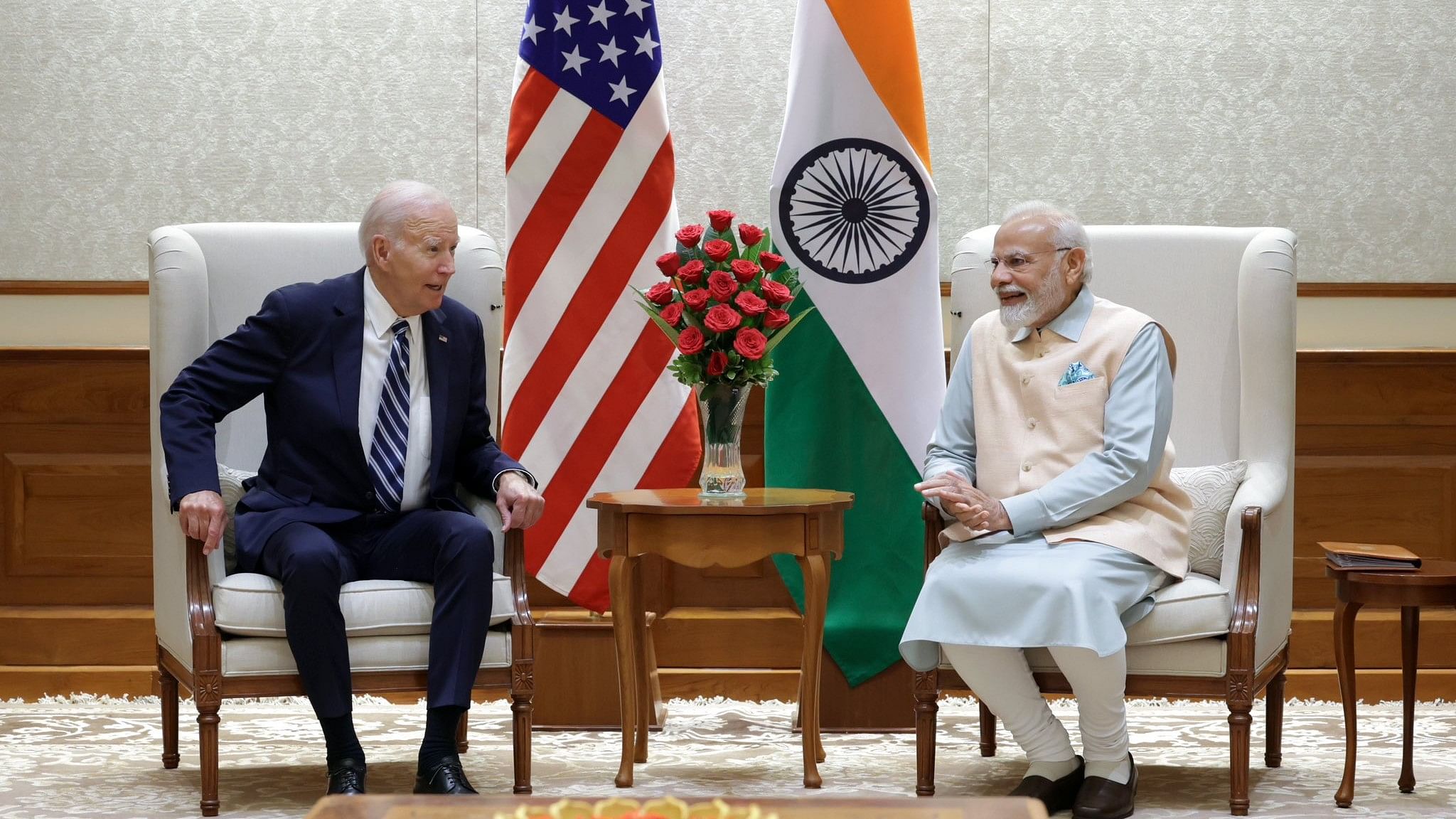
US President Joe Biden (L) and Indian Prime Minister Narendra Modi (R).
Credit: X/@narendramodi
As Prime Minister Narendra Modi and President Joe Biden had a bilateral meeting in New Delhi on Friday, India and the United States moved to take forward the defence cooperation projects the two leaders had agreed upon when they had met in Washington DC on June 22.
Modi and Biden also discussed a sea-land connectivity project linking India with West Asia and the rest of the world – apparently in a bid to counter China’s bid to expand its footprints in the region with infrastructure projects under its controversial Belt and Road initiative. They are likely to be joined by the leaders of Saudi Arabia and the United Arab Emirates, who are also attending the G20 summit in New Delhi, to announce the launch of rail and shipping connectivity project on Saturday.
An India-US joint statement issued after the Modi-Biden meeting made public that Hindustan Aeronautics Limited (HAL) based out of Bengaluru and GE Aerospace headquartered in Cincinnati had of late commenced negotiation for a commercial agreement to manufacture the F-414 jet engines in India. The Biden Administration on August 29 completed the process of notifying the US Congress about the collaborative project between GE Aerospace and HAL.
When Biden had hosted Modi at the White House on June 22, GE Aerospace had inked an MoU with HAL for the transfer of technology and joint production of F414 fighter jet engines in India for the Indian Air Force.
Biden drove to the official residence of Modi shortly after arriving in New Delhi to attend the G20 summit, which would be held on Saturday and Sunday. They had a bilateral meeting before Modi hosted a private dinner for Biden.
They noted that the Ministry of Defence of the Government of India had issued the Letter of Request to procure 31 General Atomics MQ-9B – 16 Sky Guardian and 15 Sea Guardian – drones and their associated equipment. New Delhi had decided to buy the high-altitude and long-endurance drones from General Atomics during Modi’s landmark state visit to the US three months back.
General Atomics will not only assemble the armed drones in India but will also set up in the country a global maintenance, repair and overhaul facility.
The drones from the US will augment the intelligence, surveillance and reconnaissance capabilities of India, amid China’s continued belligerence against it along the disputed boundary between the two nations in the Himalayas.
A Memorandum of Understanding (MoU) between Bharat 6G Alliance of India and Next G Alliance, operated by Alliance for Telecommunications Industry Solutions of the United States, was signed as a first step towards deepening public-private cooperation between vendors and operators in the telecom sectors of the two nations. Two Joint Task Forces have also been signed to focus on collaboration in the field of Open RAN and research and development in 5G/6G technologies.
A 5G Open RAN pilot in a leading Indian telecom operator will be undertaken by a US Open RAN manufacturer before field deployment, according to the joint statement issued after the meeting between the two leaders.
With Washington DC keen to make New Delhi less reliant on Moscow for military hardware, the US has been removing regulatory barriers to defence industrial cooperation with India over the past few months.
The joint statement issued on Friday noted that New Delhi and Washington DC had started talks to put in place a strategic framework for human space flight by year-end as they planned to send an Indian astronaut to the International Space Station in 2024. Biden congratulated Modi on the successful landing of Chandrayaan-3 at the south polar region of the Moon and the success of Aditya-L1 solar mission.
